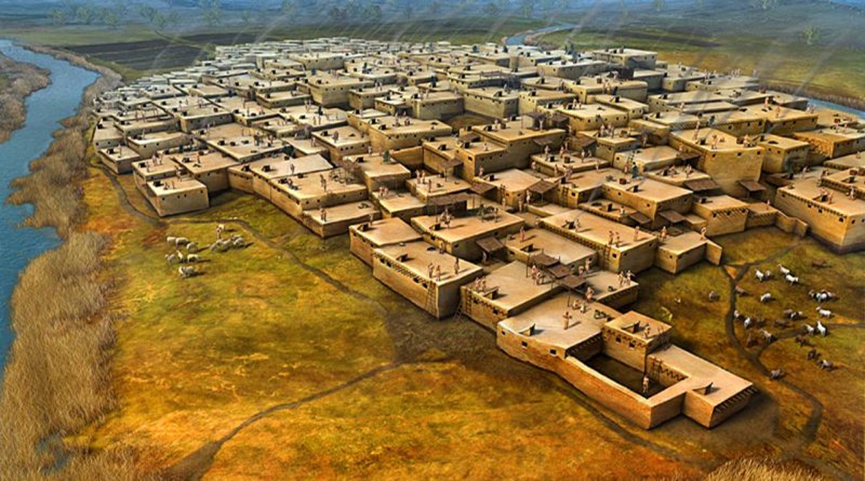Hidden Stories of the Earth - Petra
- Elanur Gündüz
- Oct 5
- 3 min read
While researching ancient civilizations, Petra immediately caught our attention. You know those photos that make you say, “Does a place like this really exist?” — Petra is exactly that kind of city. In the middle of Jordan, an entire civilization carved into the rocks. What’s even more fascinating is that Petra is famous not only for its history but also for its legends.
You’ve probably heard its name — that city with the massive stone facades that often appears in movies. When the sun sets, the rocks glow with pinkish-red light, earning Petra the nickname “The Rose-Red City.”
Petra was first founded by the Nabataeans, a clever people who managed to build a life in the middle of the desert by constructing water channels and cisterns. They grew wealthy through trade — Petra lay right along the Spice and Silk Roads, making it the beating heart of commerce. But what truly makes Petra special are its monumental structures carved directly into the rock. Palaces, temples, and theaters hewn from stone — every detail adds both grandeur and mystery. When you look at it, you’re not just seeing a city; you’re seeing a life carved into stone.
Petra’s most iconic monument is Al-Khazneh — “The Treasury.” Standing 40 meters tall and entirely carved from the rock, it was believed to hold the treasure of a Pharaoh, which is how it got its name. The façade, with its columns and intricate carvings, reflects a blend of Greek and Roman influences while still preserving the unique Nabataean artistic style.
Another colossal structure is Al-Deir, meaning “The Monastery.” With a 50-meter-wide façade rising dramatically from the rocks, it resembles a grand cathedral. Originally built as a temple, it was later used as a monastery. Reaching it today requires climbing hundreds of steps, but once you stand at the top, overlooking the Petra Valley, every step feels worth it.
Petra also boasts a Roman-era theater that could seat around 8,000 people, revealing how vibrant and culturally alive the city once was. It’s hard not to wonder — who performed there, and who watched?
Petra’s significance isn’t only architectural. According to tradition, Prophet Moses’s brother, Aaron, died here. His tomb is believed to be located on what is now called Mount Aaron (Jabal Harun), making Petra an important site in Islamic tradition as well.
Petra has even sparked debates in Islamic history. Some researchers claim that early Muslims may have faced Petra during prayer before the qibla was shifted to Mecca. Although this theory isn’t confirmed, it adds another layer to Petra’s historical mystery.
In the 1990s, the discovery of the Petra Scrolls added yet another fascinating piece to the puzzle. These ancient documents show that Petra was still active around the time of the Prophet Muhammad. The scrolls record family, marriage, inheritance, and business dealings — written mainly in Greek but containing Arabic words. This suggests that while Greek was the official written language, the people of Petra still spoke Arabic, reflecting a city alive with Arab culture and daily life.
In the 4th century AD, a series of earthquakes and shifting trade routes caused Petra to decline. It saw brief use during the Crusades but was eventually abandoned by the 13th century, becoming a “lost city” to the Western world.
In 1812, Swiss explorer Johann Ludwig Burckhardt disguised himself in local clothing, spoke Arabic, and entered the site by posing as a Muslim scholar. He was the first to reintroduce Petra to the modern world. Since then, this mysterious city has continued to inspire archaeologists, historians, and travelers alike.
Of course, a city this grand comes with its share of legends. One tale claims that the urn atop the Treasury façade holds a Pharaoh’s gold, and many have tried to break it open — unsuccessfully. That’s why it’s still called “The Treasury.” Some local myths even say the massive structures were built not by humans but by djinns (spirits), because carving such towering doors into stone seemed almost impossible.
Today, Petra is listed as a UNESCO World Heritage Site and was chosen as one of the New Seven Wonders of the World in 2007. Every year, hundreds of thousands of visitors travel to witness its breathtaking beauty.
Petra isn’t just a historical site — it’s a living cultural heritage. Bedouins still inhabit the region, guiding visitors, selling handicrafts, and offering traditional camel and horse carriage tours.
The more you read about Petra and see its photos, the deeper your curiosity grows. With its legends and history, it continues to spark wonder. Maybe one day, we’ll have the chance to stand at the heart of this mesmerizing civilization ourselves.
Written by: Elanur Gündüz









Comments